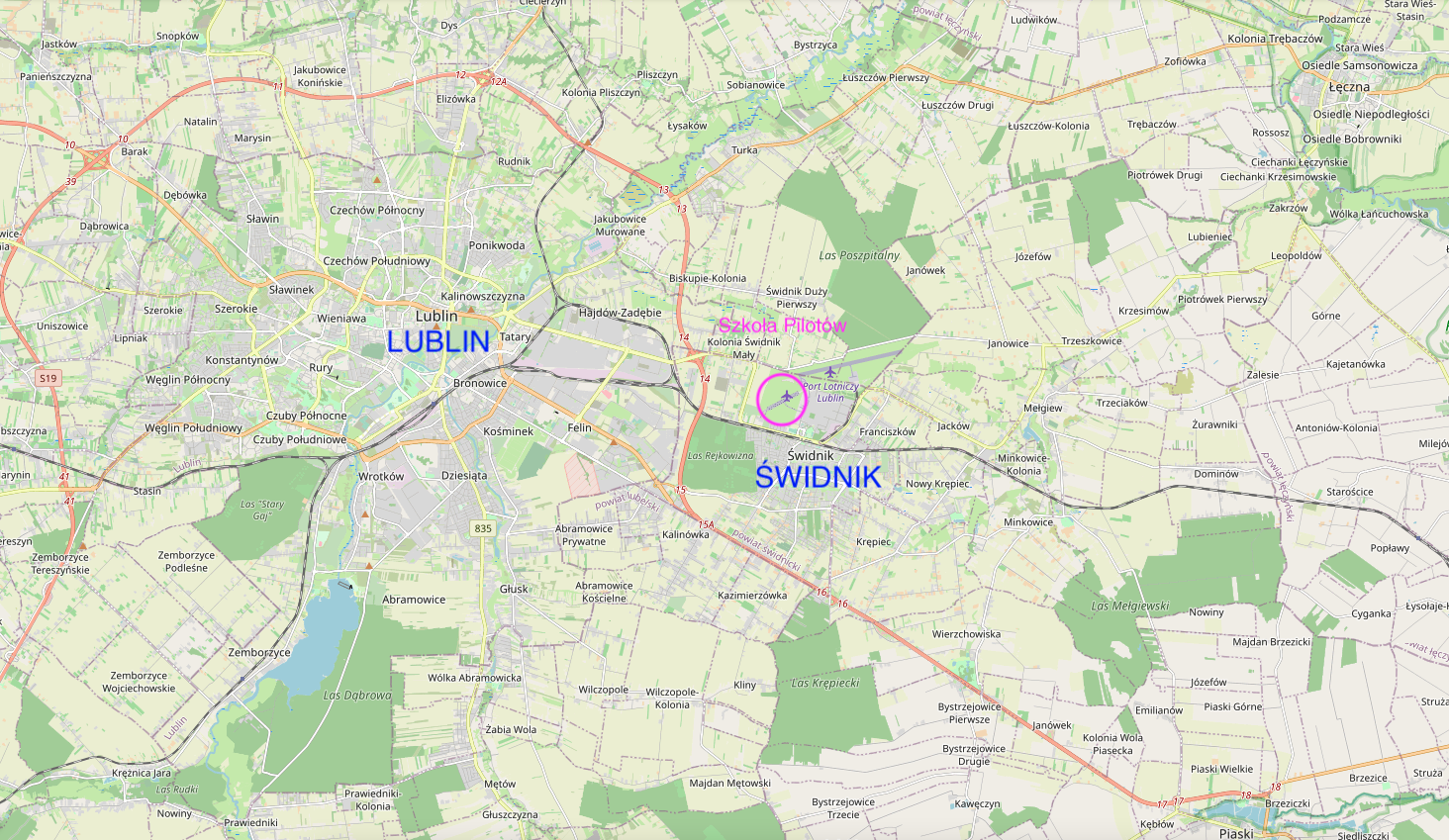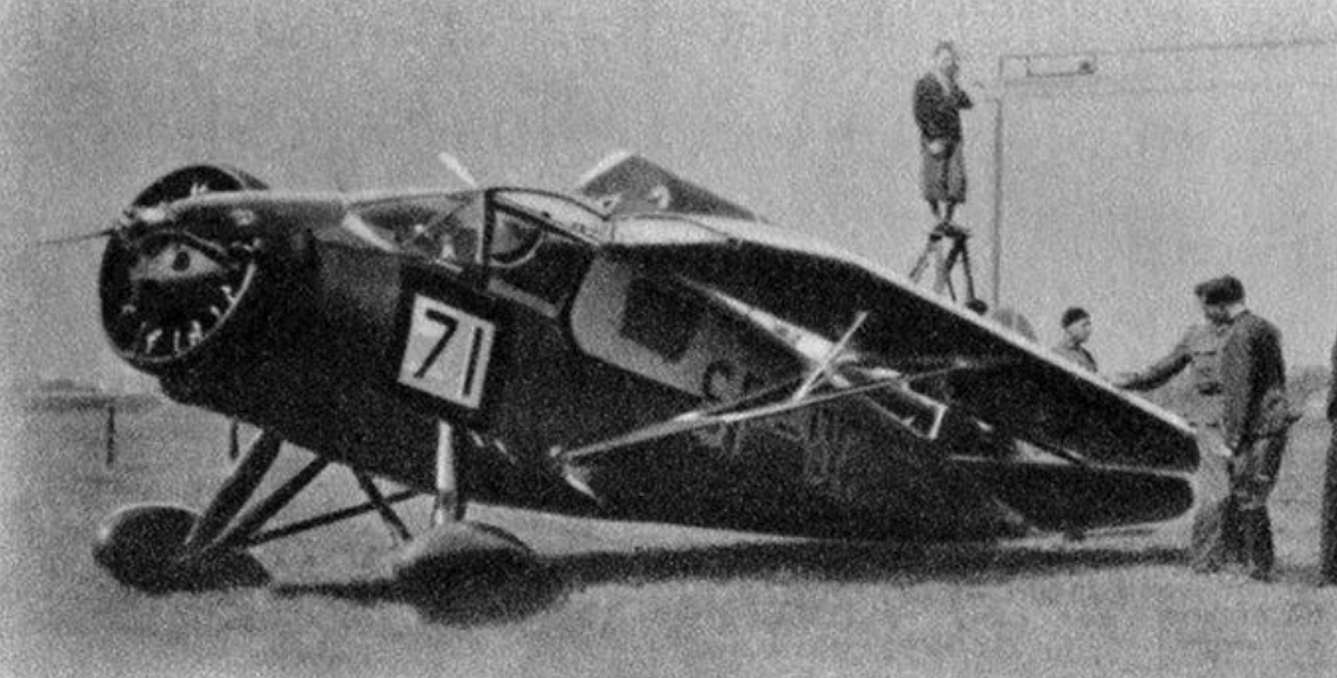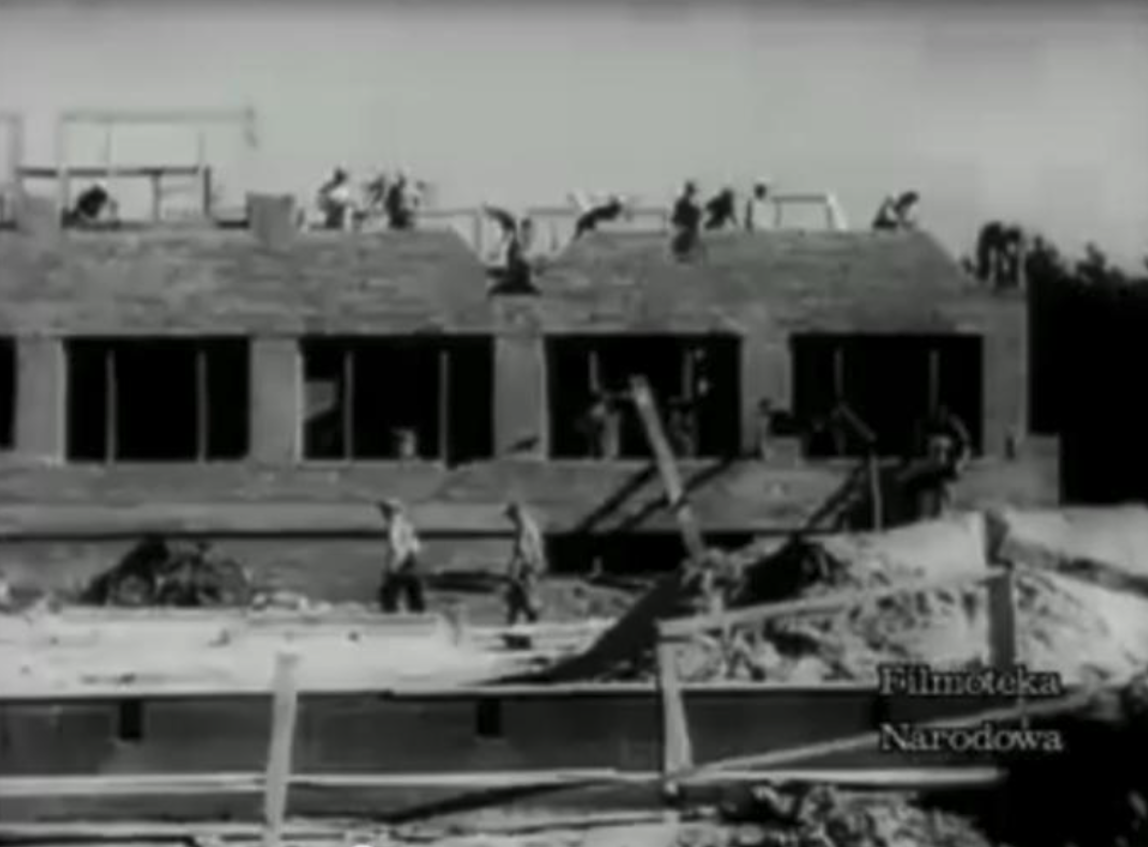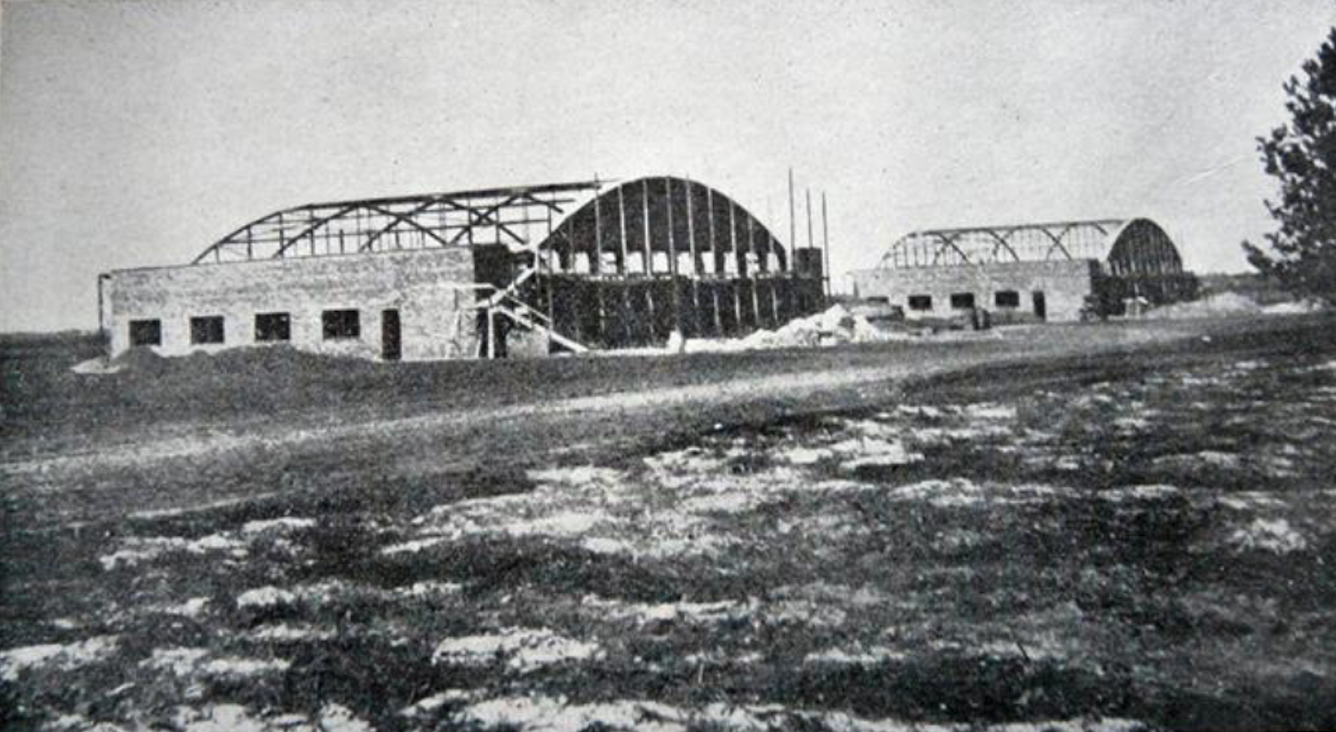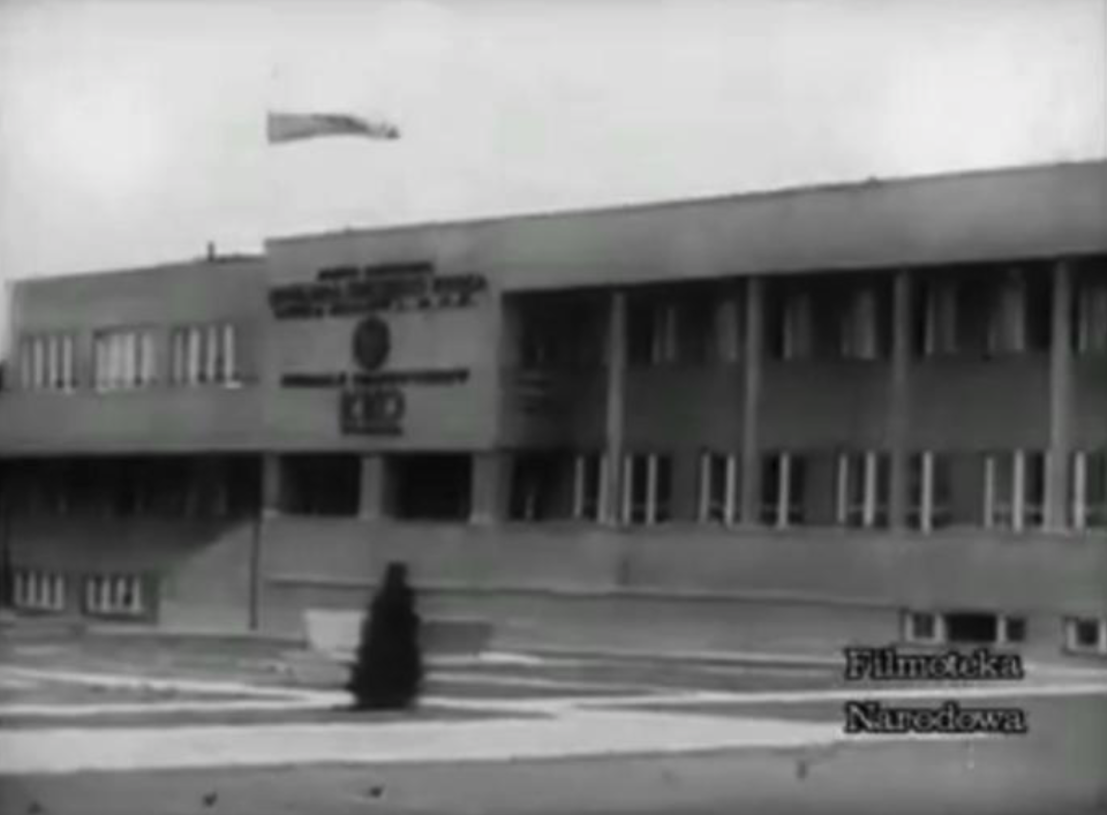Świdnik 2013-10-19
Airport and Pilot School. 1934.
Geographic coordinates: 51.231N 22.691E.
The Republic of Poland, after regaining independence after 123 years (1918), courageously set about building a strong economy and affluent living conditions for its citizens. Aviation was one of those fields that was developing dynamically.
Already in 1934, a decision was made to build an airport near Lublin. This happened after the victory of captain pilot Jerzy Bajan in the fourth International Tourist Aircraft Competition, called the Challenge International de Tourisme in 1934, on the RWD-9 aircraft. This aircraft was purchased thanks to voluntary contributions from the inhabitants of the Lublin region.
The goal was not just to build an airport. The goal was to create a Pilot School. The main initiator of the project was the Main Board of the Air and Anti-Gas Defense League (LOPP). This organization also partly financed the investment. The rest of the funds came from voluntary contributions from the society and the Komunalna Kasa Oszczędnościowa. A special committee was appointed in KKO (Communal Savings Bank) and allocated 500,000 zlotys for the construction of the school. The initiative to build a school and an airport was supported by the Aviation Command, issuing a special directive. The school was named after Marshal Edward Śmigły Rydz.
An area of 146 hectares was purchased for the facility from the Sisters of Charity. Construction began in the spring of 1935. The first works consisting in leveling the area were performed by the inhabitants of the surrounding towns, with their own horses and their own equipment. In the autumn of 1937, the construction of two modern hangars, technical facilities with an underground fuel depot and an administration and dormitory building began.
Photo description: The photo shows the construction of two hangars of the Pilot School. In the times of communist Poland, this photo was signed – "Construction of the plant", and the name was PZL WSK Świdnik.
On June 4, 1939, the Pilot School and Airport was officially opened. It was during the celebrated celebrations – Days of Lublin, Zamość and Lublin Region. Commander-in-Chief Marshal Edward Śmigły-Rydz arrived at the official opening and dedication of the LOPP Pilot School. Also present at the airport were: General Schally and Major Hartman, Minister of Communications Colonel Ulrych, Deputy Ministers Korsak and Piasecki, Lublin Voivode de Tramecourt, President of the LOPP main board Lieutenant General Eng. Leon Berbecki, commander of Corps District No. II, general Smorawiński, representatives of the Lublin board, KKO, unions, institutions and social organizations.
The opening ceremony of the Pilot School in Świdnik was an opportunity to demonstrate the patriotic attitudes of Polish society. The obvious threat to the sovereignty of the Republic of Poland by the German and Soviet armies resulted in the organization of bottom-up initiatives to collect money and valuables and transfer them to purchase armaments for the Polish Army. On June 4, 1939, the youth of Lublin handed over three heavy machine guns to Marshal Edward Śmigły-Rydz. In turn, in Lublin itself, on a similar initiative, 50 ambulance cars were donated to the Polish Army. Similar initiatives were carried out in other cities of the Republic of Poland.
The Pilot School in Świdnik developed very dynamically. It was not the only one, but it was the largest in Poland. Students received uniforms, accommodation and food. The basic subjects were those related to aviation and chemical defence. These directions resulted from the experience of the Great World War. In addition to learning theory and practice, students did a lot of finishing work. The school was constantly expanded. In their free time, they willingly used the fire-fighting pool, which also served as a swimming pool. In the last days of peace, anti-aircraft trenches were dug at the airfield in preparation for defense.
Aggression of the German and Soviet armies. 1939.
On September 1, 1939, the German army invaded Poland. The Pilot School and the Airfield bombed German planes. The airport was damaged, but the main school facilities were preserved.
On September 2, 1939, the commander of the State Police of the Lublin poviat wrote in a report to the Lublin starost: "I report that on September 2, 1939, at 08:30, there was an air raid by German aircraft on the airfield in Świdnik. The effects of the air raid: 6 people killed, including 2 military personnel, 3 civilian employees and 1 woman working next to the airport, 9 people injured, the hangar damaged and the new building at the airport under construction. About 100 bombs fell in the forest. 50 bombs and 5 duds fell in the Francisco colony. There were no casualties. Railway office undamaged. The telephone line between Świdnik and Lublin was interrupted. Interviews are being conducted to determine the identity of those killed.
The following police report stated: “I report that on September 4, 1939, at 4:30 p.m., Karol Gryc, son of Jerzy and Katarzyna (born on January 16, 1883, in the village of Żyżlice, the Evangelical denomination, residing in Cieszyn), was detained by a patrol in Mełgwia, on suspicion of espionage. The detainee had with him two maps of Lublin, in a notebook a sketched plan of the airport in Świdnik, 4 blank registration slips with the seals of Cieszyn. On August 28, 1939, he arrived in Adampol, where he settled without registering. The named was escorted to the officer’s outpost in Lublin, where he was detained. The evidence remained at the facility."
On September 17, 1939, the Red Army entered the territory of the eastern Republic of Poland, attacking the Polish Army and Police. The chances of effective defense were buried. The time of German-Soviet occupation has come.
During the occupation, the German army used the airport for its own military purposes. They set up their own aviator school here. In the spring of 1944, they started building a concrete runway, which they did not complete. Many pictures of German men flexing their breasts for the camera come from this period. The German school functioned until July 1944, when it was evacuated before the approaching Soviets.
A Home Army military intelligence report from May 1944 stated: “The Świdnik airport staff is about 1,000 people. In area 1, the German anti-aircraft artillery occupied positions for their weapons at the 1st Avenue of Prawedniki (near the farm of Samborski and Klimek), at the 1st road of Zemborzycka (on the section from the railway station to the inn) and in the countryside (near the farm of Golijanka, at the "Tatarówka" road), positions for their weapons. In addition, around the Świdnik airport: in Świdnik Stary, Kazimierzówka, Janowice, Krępiec, there are spotlights – the number of except for Krępiec, there are 2 floodlights (one near the school, the other near the mill), both insured – 1 heavy machine gun and a dozen or so service people.”
Just before the withdrawal of the German troops, the school buildings (two large buildings) and two hangars were blown up and completely destroyed.
The German occupation was a period of debasement and humiliation of the Polish nation. The Lublin region was intended exclusively for German settlers. Nevertheless, Home Army units operated effectively in these areas. In the vicinity of Lublin and Świdnik, the partisans conducted successful operations. First against the German occupation, then against the communist occupation. It was on the lands of today’s Świdnica poviat that, until 1963, the last soldier of the Polish Independence Underground, Józef "Lalek" Franczak, was active and hiding. He and his soldiers were tracked down and murdered by the communists in 1963. Glory to the heroes!
Written by Karol Placha Hetman

